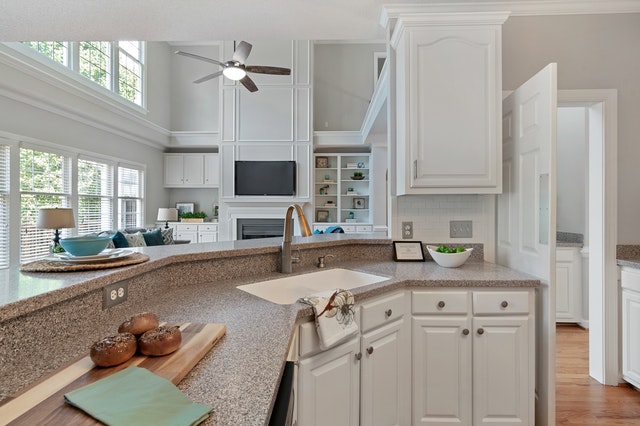The Best Way to Paint Countertops to Look Like Marble
Any kitchen can look luxurious with the added touch of stunning marble countertops. Thanks to its timeless and classic design, it can be applied to different themes, seamlessly blending into various interiors.
Even if marble isn’t in your budget, you can still achieve the look and feel without compromise. For example, laminate countertops can be painted to look like marble at a fraction of the cost.
A step-by-step guide to marble painting countertops
One of the best parts of working with this kind of stone is that there are many different colours to choose from, including gold, black, brown, and blue. And the technique we are about to describe will work with all of them. The steps are as follows:
- It is essential to make the painted surface as smooth as possible to look like natural marble. Don’t cut corners here. Wipe the counter thoroughly with soap and hot water. Allow the counter to dry.
- The smooth, glassy surface of marble adds to its beauty. Deep scratches and nicks should be filled with laminate filler. Roughen the counter surface with medium-grit sandpaper to make it easier for the paint to adhere. Remove dust from the surface with a damp rag or tack cloth, and allow to dry.
- Cover any surfaces you don’t want to be painted with tape, such as the floors, backsplash, sink, and cooktop edge, with plastic sheeting. Then, primer should be applied to all surfaces, including the edges, using a small roller.
- Overnight, allow to dry, then lightly sand with a fine-grit sandpaper. Dust can be removed by wiping it with a damp rag.
- White paint must first be cut in with a two-inch brush, filled with a seven-inch roller, and then left to dry.
- Begin adding the colour variations that will create the marbled effect next. By using a round brush, use three shades of grey paint and dab them on randomly. Start with the lightest, then blending into the medium and finally blending into the darkest. Smooth the lines with a sea sponge.*Oil paint dries more slowly than acrylic or latex paint, so no need to rush the process. Additionally, specific colours may appear thicker as you layer them. However, if it dries out evenly, do not worry.
- Paint the marble veins before the paint dries with a feather or a small artist’s paintbrush. Typically, veins run diagonally, and their contours are not smooth, so smudging the lines will be necessary for reproducing the pattern. Dip a feather’s tip into the darker grey and draw diagonal lines while swivelling it on its back and side to get varying widths. Continue with the additional shades of grey.
- The paint may need to be thinned with a bit of paint thinner if it doesn’t flow from the feather easily. Paintbrushes are used by pressing the bristles forward and twisting them as you go. Don’t force the brush; let it do its work.
- You can blot the paint with a dry sea sponge or brush it over with a clean, dry paintbrush before it dries to blur some of the edges and give the veins depth and width.
- Let the countertop completely dry after painting the veins. When the painted countertop is completely dry, seal it with an oil-based polyurethane.
- Let the countertop dry entirely for a minimum of 24 hours.
Looking for more inspiration for your next DIY or home renovation project? Take a look through the Slidetrack blog for ideas to suit the interior and exterior of your home.



